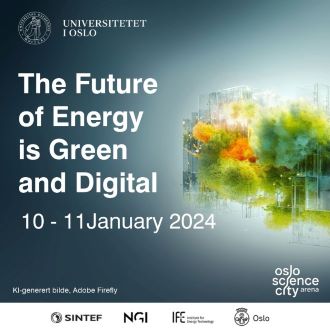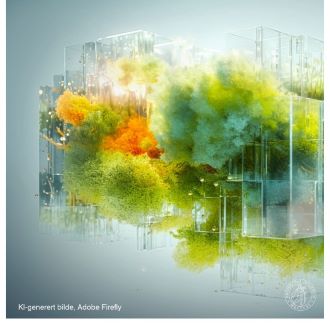The guidelines cover the publication of content (text, sound, image, video) that is generated by artificial intelligence (AI) in UiO's main digital channels; uio.no, the faculties and museum websites and UiO's social media.
Approved AI tools at UiO: Artificial intelligence and GPT
We should approach generative AI in the same way we do other sources and tools: critically, curiously and with caution. We are always responsible for publishing correct and up-to-date material, regardless of whether we have used AI in the making of the content or not. If we publish AI-generated material on our channels, it should be properly labeled
More about the use of AI at UiO, especially "Ethics and social responsibility" and "Legal guidelines". Artificial intelligence (AI) at UiO
Text
We can
- use AI for tasks such as proofreading, translation, transcription, title suggestions, summarisation, idea generation, generating metadata, research, for brainstorming, as work support, etc.
- publish text generated by AI, but before publishing, the content must always be proofread and edited by a human, and all facts must be checked by a human.
We cannot
- publish unedited AI-generated text.
Unedited AI-generated content as a point in itself, for example in connection with research, can be published. The content must be clearly labelled.
Remember that you must account for some significant limitations when using GPT UiO: Viktige begrensninger og forbehold ved GPT UiO (Norwegian only)
Images and video
The rules and copyright around AI-generated images and videos are still unresolved. AI-generated images and videos also require a lot of energy. The technology should therefore be used with caution. AI-generated images and videos must explicitly labelled with the tool used and provide essential background information. The labelling should be clear enough to prevent reuse.
We can
- use AI to streamline workflow, for example, to remove noise from images and video, edit, adjust light and contrasts, etc.
- publish AI-generated illustrations, but be cautious and discuss the usage with a colleague, preferably a manager or editor for the channel.
We cannot
- publish images or video that could be mistaken for real photographs or videos.
- publish photographs that have been manipulated with AI.
AI-generated content as a point in itself, for example in connection with research, can be published. The content must be clearly labelled.
Audio
We can
- use AI tools to improve audio recordings or streamline workflow.
We cannot
- publish AI-generated audio.
AI-generated content as a point in itself, for example in connection with research, can be published. The content must be clearly labelled.
Labelling
Here you will find examples of how we should label AI-generated content.
Example of text labelling
- The text was generated by UiO GPT
- The text was generated by UiO GPT with keywords XYZ
Examples of labelling of images/illustrations
AI-generated images and videos must be explicitly labelled with the tool was used and provide essential background information.


Image caption: AI-generated: The image is generated by Microsoft Copilot